
Best Medicine
The Monash University BioLab building is all about connection.
Superlabs are here to stay. Monash University’s Faculty of Medicine had its labs strewn across the campus and the consolidation plan started years ago.
The brand new BioLab building on the Clayton campus opened for business at the start of this academic year and it’s a doozy. Five floors of labs. Each floor can accommodate 240 students. Each floor can be divvied up into four zones.
“Some 12 different groups teach in here — pathology, histology, anatomy etc — and they all have different requirements,” explains Peter MacLean, Audio Design Manager & Lead Architect at the university. “The idea was to build a lab system that allowed us to share facilities among different groups and to meet all their requirements but also allow the flexibility of different groups using it at different times and different class sizes. There are five floors of labs: 240 students each that can be broken down into four zones of 60 students each; and can then be linked as a single 240-student teach space, two 120s, or four groups of 60 groups… at the press of a button.”
CONNECTION IS THE CHALLENGE
Of course, as lead architect and designer of the BioLab’s AV systems, what Peter is describing is precisely the aim and challenge confronting any superlab designer. The measure of success is largely down to how connected the students feel with the lecturer and the content. It’s a significant challenge regardless of whether you have one lecturer teaching 240 first-year students how to use their Leica microscopes, or if you have four distinct senior-student groups all slicing up a different part of a cadaver.
It’s something Peter and the academic staff discussed at length in the years of workshopping the best possible solution:
“Ultimately it’s about the audio,” concludes Peter MacLean. “It’s about speech intelligibility and connection with the academic. It’s about allowing the students to feel there’s a one-on-one relationship, even if there are 240 students in the room.”
IN THE ZONE
AV designers have grappled with the audio zoning issue for years. Some have used headsets, where students dial in the relevant lecturer — great for museum tour guides, not so great for the students’ esprit de corps. Others have dabbled with highly directional ‘sound shower’-style loudspeakers which provide unbelievably good directionality but do so at the expense of a full frequency response. Still others have adopted an in-ceiling speakers over each table, but often suffer from an unacceptable amount of spill between zones in what’s unavoidably a highly reverberant (linoleum and steel) teaching environment — resulting in reduced speech intelligibility.
As for Peter MacLean? He buzzed EAW. Internationally, Monash Uni is EAW’s largest university customer, so the loudspeaker manufacturer and PAVT (the long-time Australian distributor) were quick to respond.
Peter described what he required: a loudspeaker that could provide students with a ‘nearfield’ audio experience regardless of where they were in the lab.
“EAW had an ideal speaker in the LS432,” recalls Peter MacLean. “It’s somewhat like a baby line array, featuring very tight control in one axis that allows us to offer very high intelligibility and very high connectivity with the lecturer – much higher than normal in-ceiling speakers – and their directivity help to isolate the sound between the adjacent zones.”
Peter Maclean: [email protected]
Rutledge Engineering (Integrator): rutledgeav.com.au
Marshall Day (Acoustic Consultant): (03) 9416 1855 or au.marshallday.com
WSP (AV Consultant): wsp.com
PAVT (EAW, Powersoft): (03) 9264 8000 or pavt.com.au
Multiplex (Builder): (03) 9353 3500 or multiplex.global
Crestron: crestron.com.au
Sony Professional: pro.sony
Jands (Shure Wireless): (02) 9582 0909 or jands.com.au

EAW: GOING WAY BACK
Peter MacLean, Audiovisual Desigin Manager & Lead Architect: “Over the years I’ve learned that technology on its own is one thing but working with the suppliers and the manufacturers can really add an extra benefit to what you’re trying to achieve because they understand what our philosophy is and we have a shared history — you develop that relationship and they give you that extra support.
“My relationship with EAW goes back to 1995 when I bought the second EAW system in Australia for a large church. I EAW because they provided excellent sound quality but also because of the high speech intelligibility — much better than the other models at the time. I’ve subsequently used lots of different brands and models but as a university we have established a lasting partnership because EAW delivers a wide range of models that exactly suit our requirements.
“EAW provides great support and PAVT is particularly supportive in what we’re doing. PAVT provides not just sales support but technical support – helping us design our systems, design our EQ and our DSP standards. This way we can roll out systems — Rutledge AV as the integrator can drop in the files prepared by our AV engineers and we get predictable and exceptional results.”

EAW’S GO-TO BOX
The passive EAW LS432i two-way enclosure features two four-inch drivers either side of a HF array of three one-inch soft-dome tweeters. The system maintains a well behaved nominal vertical coverage pattern of 20° to below 1000Hz.
“The LS432 has two major advantages over an in-ceiling speaker or museum-type speaker,” explains Peter. “It’s a much higher quality loudspeaker – it sounds amazing. The other key advantage is you’re only hearing the LS432 nearest to you, rather than the next row of in-ceiling speakers. This provides a far more intimate, nearfield experience for our students and improves that all-important speech intelligibility.”
Rutledge AV’s Project Manager, Nick Ryder, elaborates: “Ultimately, the EAW LS432i speakers were chosen due to their superior clarity and very tight angle of disbursement. This was following extensive EASE-modelling by the consulting engineers; and mock-ups and post-installation validation by Rutledge AV. Four speakers were recessed above each lab table and were fully zone-controllable. In total around 450 speakers were installed.”
The acoustics of the BioLabs play a role. Marshall Day did its level best to tame the otherwise hostile acoustic environment, rich in hard, shiny surfaces. The ceiling is replete with absorbent material and assists greatly, while the noise from the services has been kept to a minimum.
PAVT’s Technical Support Manager and Smaart black-belt, Ben Clarke, tuned the system.
“PAVT has always provided great service,” enthuses Peter MacLean. “And being one of EAW’s largest clients doesn’t do any harm! Ben Clarke went the extra mile.”
“Audio throughout the facility is supported by Powersoft Quattrocanali 1204-DSP-Dante amplifiers,” continued Rutledge AV’s Nick Ryder. “Maximising the system’s efficiency and reliability by implementing the EAW Greybox presets, which correct phase and magnitude response as well as system limiting and protection.”

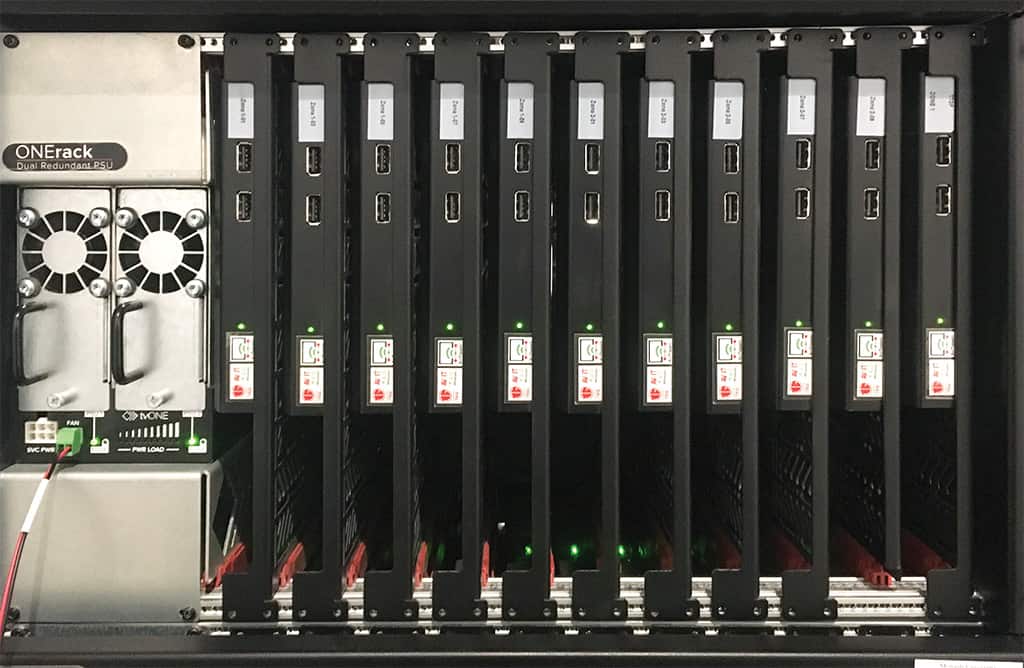
ONERACK IS THE ONE
tvONE’s OneRack was launched a couple of years ago promising the simplification of racking devices that don’t generally like being racked — baluns, transmitters/receivers, media players etc, each with their own plug pack.
Peter MacLean: We use the OneRack to mount the Teq AV IT WiPS710 Wireless Presentation devices in the labs. In Level 1 to 3 we have 44 of these devices in the labs and they are mounted in a 10U tvONE OneRack and a 6U OneRack.
The OneRack solution provided the following benefits to us:
- Takes up less space in the rack than the traditional method of attaching two or three to a 1U shelf.
- Provides built-in power for the devices, negating the need to mount 44 power packs within the rack and their associated cabling.
- Provides a dual redundant power supply system that is also monitored by the Crestron control system, warning us via Fusion if one of the power supplies fail, allowing us to replace it without any impact on the teaching.
- Forces air cooling of the devices — they do get hot and if they are not kept cool enough, they freeze-up, require time to cool and then need rebooting.
- Provides much easier access for servicing the devices, as the blades they’re attached to can be quite easily slid out of the frame.
Corsair Solutions (tvONE): (03) 9005 9861 or corsairsolutions.com.au
Axis AV (Teq AV IT): 1300 294728 or axisav.com.au
VIDEO: DM ME
Each floor of the BioLab building has a Crestron DM 128×128 frame for matrixing video. Point-to-point video remains the preferred approach for Peter MacLean. Each floor of the building is self contained in this regard – if one floor wishes to share video with another, that can happen via a Cisco SX80 VC appliance.
Peter MacLean: “We really like the concept of Crestron’s NVX [video-over-IP system] but we had to ask ourselves: ‘what’s the benefit of using NVX over DigitalMedia?’ DM is uncompressed and it has less latency, so why send video all the way up to a centralised IT room to be compressed and sent right back again when we don’t have to?
“We’ve also noticed that something like 80 percent of installations with video-over-IP end up putting their own AV network in any way, because it doesn’t work on the infrastructure network. From our point of view, if we can’t put it on the infrastructure network why would we put a whole other network in? Meanwhile, Crestron DM is simple and easy to manage.”
Just about every floor has two main NEC 98-inch displays per zone. Each zone has a teacher’s touchdown point – not a lectern but a landing zone for the teacher’s PC and materials. The touchdown point has a Crestron wall panel for system control.
There are four sources: the teacher’s laptop, the house PC, the Teq AV IT wireless presenter, and a Sony PTZ camera if the teacher wishes to use the big screens to show the room something interesting, like a skin lesion.

HOT BUTTON ISSUE
Each student station has its own AV system. A Crestron keypad allows the students to select a source, such as the station’s own NUC PC, student laptop, or the wireless presenter (to share the content of an iPad etc). Upon start-up, the student’s station display will mirror the teacher’s source selection.
“Not so long ago, university AV systems did their best to avoid any student control. The fear was, the students would do something disastrous, inappropriate or nefarious. Things have changed with the move to student-led learning – it’s about engaging students and, let’s face it, they’re over 18 and if they’re going to mess up, it’s better they do it at uni rather than their workplace down the track.
“The more the students are engaged, the more they’re invested in their own learning – they’re not just passive participants, they’re active participants. And we know that engaged students turn up to lectures; when they turn up to lectures they get better results; and when they score better results they don’t drop out.
“That’s what motivates myself and my team. We know that with good AV design we can influence retention rates and help students to learn.
“This is more than a job. We can talk about speech intelligibility in abstracted terms but to me that connection with the academic in the classroom clearly flows through to better outcomes; the sort of results we actually care about… students learning, graduating and changing the world.”
MAKING THE CUT: PC2 REQUIREMENTS
Given the facility houses dissection and biomedical resources, it was a requirement that all AV equipment was installed to conform with Physical Containment 2 (PC2) obligations. It meant Rutledge AV was required to recess speakers into the ceiling finish, which wasn’t as easy as you may think. Given the weight of the EAW LS432i loudspeakers, Rutledge had to devise a way to permanently mount them to the slab before the ceiling was installed but then also slightly change the locations of the speakers to locate them within precise, laser cut holes.
Project Manager, Nick Ryder: “Ultimately we designed a track-type grid to mount the speakers onto, which gave us the ability to move the speakers in any location on the horizontal plane and finely tune their locations to achieve a precise fit into cut-outs after the ceiling tiles were installed.
“To meet PC2 requirements we had to invisibly caulk the edges of the speakers to ensure containment between the laboratory and the ceiling space was maintained. Around 450 of these speakers needed to be installed in this manner.”
Phew.




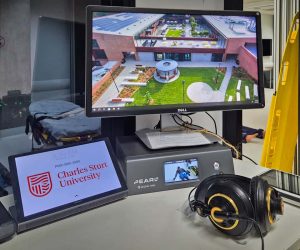
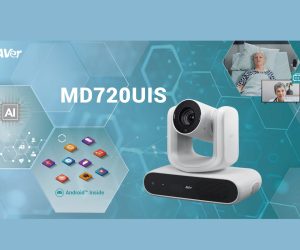
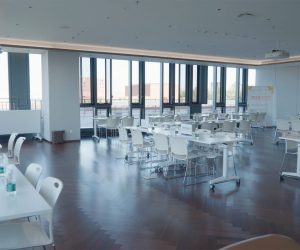




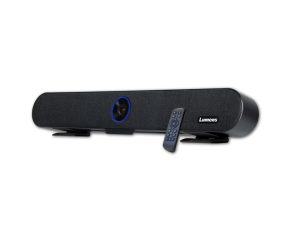




RESPONSES